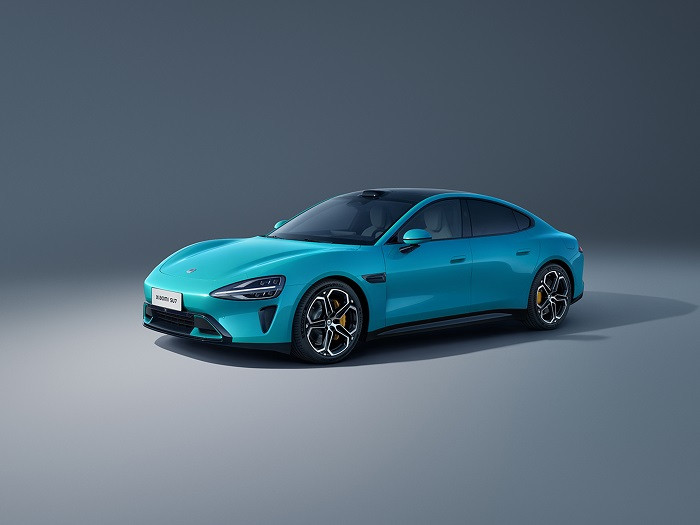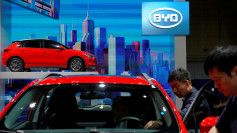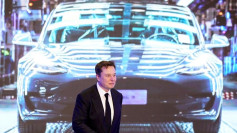At 2 p.m. on December 28, 1003 days after announcing its venture into the smart electric vehicle industry, Xiaomi held its first car launch event. While technology was the focus of the event, Lei Jun, the company's founder, still took the opportunity to introduce the first car model, the SU7.
Reporters at the scene observed that the venue was packed, with one-third of the seats occupied by Xiaomi fans, some of whom paid out of pocket and traveled for hours by train to attend the Xiaomi car launch.
The theme of the event was "Leap," with the holographic scan of the SU7 model's chassis as the backdrop, showcasing Xiaomi's strategic vision of a complete "people, car, home" ecosystem. Lei Jun focused on introducing the technology in five key areas: electric drive, batteries, large casting, intelligent driving, and smart cockpit.
In the field of electric drive, Xiaomi unveiled three self-developed electric motors. Lei Jun stated that the motor system was developed by a team of 100 experts, with two models (V6/V6s) suitable for 400V and 800V voltage platforms, respectively.
Additionally, Xiaomi announced a new flagship motor, the V8s, expected to be used in vehicles by 2025. This motor boasts 578 horsepower and a higher power density, with a newly designed rotor and cooling system for enhanced performance.
In terms of battery technology, Lei Jun mentioned that cooperation with CATL significantly improved the safety of its battery cells. The mainstream CTB (Cell to Body) technology is also featured in Xiaomi's SU7, which promises to achieve up to 150kWh of battery capacity in the future. Due to cost and pricing strategies, the SU7 might offer up to 132kWh battery packs in mass-produced cars, providing a range of up to 1000 kilometers.
Regarding vehicle manufacturing technology, large-scale casting technology popularized by Tesla is also employed in Xiaomi's new car. Lei Jun revealed that Xiaomi uses a 9100-ton press, temporarily leading ahead of Tesla and Weimar. This technology reduces over 840 welding points, with other highlights including a reserved crumple design to avoid high costs from minor collisions.
In the area of intelligent driving, Xiaomi adopted a bottom-up research strategy with a development team of 1000 people. Xiaomi's intelligent driving system uses large models to mimic drivers' decision-making, equipped with two Nvidia Orin X chips, each offering 508 TOPS of computing power.
Moreover, Xiaomi's intelligent driving system includes high-precision LiDAR, achieving 0.05 meters parking accuracy and dynamic adjustment of perception range. A demo video showed the SU7 completing unmanned parking in a seven-story parking lot without any intervention.
Lei Jun stated that Xiaomi's first-phase total investment in intelligent driving technology reached 3.3 billion yuan, now increased to 4.7 billion yuan. The goal is to enter the industry's top ranks by 2024 and initiate 100-city pilot navigation NOA by the end of the year.
Lei Jun considers the smart cockpit a traditional strength for Xiaomi. The previously released Surge OS serves as the vehicle's operating system, offering the same usage logic as Xiaomi's phone OS, supporting full-screen sharing and interconnectivity with phones. Other features include a large HUD and an oversized tablet for the rear seats. Lei Jun mentioned that the car ecosystem (i.e., the APP market) is also open to third-party apps.
Before this event, Lei Jun teased on social media for several days, mentioning that the launch would focus on technology, not products. However, Lei Jun still introduced the new car, though it will need several months of validation before officially hitting the market.
The Xiaomi SU7 is positioned as a mid-to-large pure electric sedan, with a 0-100 km acceleration time of 2.78 seconds and a top speed of 265 km/h, offered in bay blue, elegant gray, and olive green.
Lei Jun also revealed that Xiaomi's research and development investment in cars is substantial, with a team of 3400 engineers. He considers market acceptance and production capacity significant challenges, worrying that excessive demand could lead to long wait times for consumers, potentially affecting the brand's image.
"I'm particularly worried that it won't be popular right off the bat, and no one will buy it. I'm even more worried that if everyone comes to buy it, and you have to wait one or two years, we'll definitely be criticized severely."
Regardless, this is likely the last launch event before the Xiaomi SU7 officially hits the market next year. Interface News learned from Xiaomi Home employees that stores have been adjusted to welcome the new model, with some even renovating their display areas to provide more space for Xiaomi cars.
Ultimately, the deciding factor for success or failure may still be the highly secretive price Lei Jun holds. In response to pricing at the launch, Lei Jun stated that figures like 99,000 or 149,000 are impossible, "Xiaomi cars will indeed be a bit expensive initially, but we'll ensure everyone feels the price is justified."





